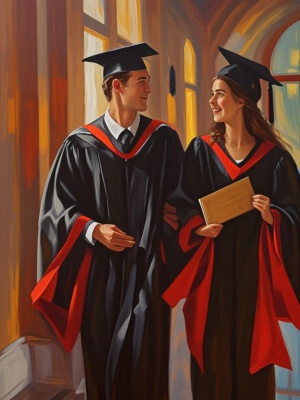The Art of Oil Painting Cats: A Complete Guide
Introduction: The Timeless Appeal of Feline Oil Paintings
Oil painting of cats has been a beloved subject in art history for centuries, capturing the elegance, mystery, and personality of these fascinating creatures. From ancient Egyptian depictions to modern masterpieces, artists have used oil paints to immortalize cats in stunning detail. This medium's rich textures and vibrant colors make it particularly suited for rendering the luxurious fur and expressive eyes that define feline beauty.
Whether you're an art collector seeking the perfect cat portrait or an artist looking to improve your techniques, understanding the nuances of oil painting cats can enhance your appreciation for this specialized art form. In this comprehensive guide, we'll explore everything from historical context to modern techniques, including how AI technology is influencing pet portraiture today.
The History of Cat Oil Paintings
From Ancient Times to the Renaissance
The tradition of depicting cats in art dates back to ancient civilizations, but oil painting of cats became particularly prominent during the Renaissance. Artists like Leonardo da Vinci studied feline anatomy extensively, though few of his cat sketches were developed into full oil paintings. The medium's ability to capture texture made it ideal for rendering fur and whiskers with remarkable realism.
19th Century Popularity
During the 19th century, oil painting of cats reached new heights of popularity. Artists like Théophile Steinlen created iconic works featuring cats, while the Pre-Raphaelites often included felines in their symbolic compositions. The Victorian era's fascination with pets led to numerous commissioned cat portraits among the wealthy.
Techniques for Painting Cats in Oil
Capturing Fur Texture
Creating realistic fur in oil painting requires specialized techniques:
- Start with thin underpainting to establish values
- Use dry brush techniques for whiskers and fine hairs
- Layer colors to create depth and dimension
- Vary brush sizes for different fur lengths
Eyes: The Window to Feline Personality
The eyes are the most expressive feature in any oil painting of cats. Professional artists recommend:

- Begin with the darkest areas of the iris
- Add reflective highlights last
- Pay attention to the unique shape of feline pupils
- Use glazing techniques for depth
Modern Approaches to Cat Oil Painting
Combining Traditional and Digital Techniques
Many contemporary artists now begin with digital sketches before transferring their designs to canvas. Some use AI-assisted tools to experiment with compositions and color schemes before committing to oil paints. This hybrid approach allows for greater experimentation while maintaining the rich texture that only oils can provide.
Commissioning Custom Cat Portraits
For pet owners wanting to immortalize their feline companions, professional artists offer custom oil painting services. These range from traditional realistic portraits to more abstract interpretations. Many artists work from photographs, making it possible to create posthumous portraits of beloved pets.
Problem-Solution Matrix for Cat Oil Painting
| Common Problem | Professional Solution |
|---|---|
| Fur appears flat | Use layered brushstrokes in varying directions |
| Eyes look lifeless | Add multiple layers of glaze for depth |
| Colors appear muddy | Limit palette to 3-4 dominant hues |
| Composition feels static | Study cat anatomy and natural poses |
Conclusion: The Enduring Magic of Feline Oil Paintings
Oil painting of cats continues to captivate artists and collectors alike, combining technical challenge with emotional resonance. Whether created through traditional methods or with modern AI-assisted techniques, these works celebrate the unique beauty and personality of our feline companions. For those interested in exploring this art form further, studying both historical examples and contemporary approaches can provide valuable inspiration.
As demonstrated by resources from institutions like the Metropolitan Museum of Art and modern platforms like MediaAI, the art of cat portraiture continues to evolve while maintaining its timeless appeal. Whether you're an artist, collector, or simply a cat lover, the world of feline oil painting offers endless opportunities for appreciation and creativity.